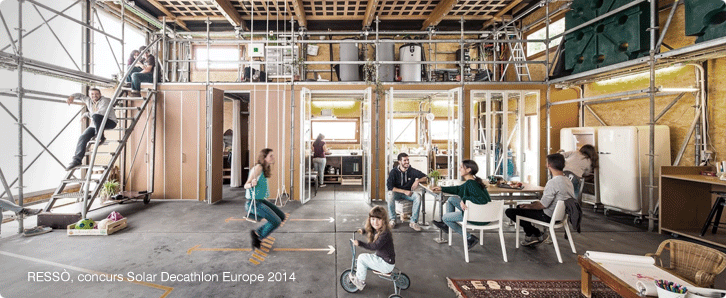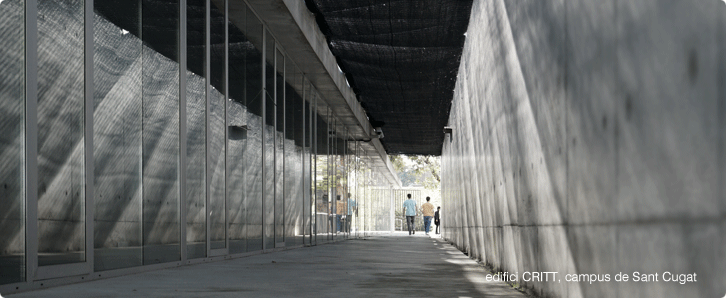Studying at ETSAV
Some reasons to enrol an architecture programme at the Vallès School of Architecture
The social commitment of architecture
Architecture has evolved into a more transversal profession, with architects increasingly taking on social and environmental responsibilities. At ETSAV, we train professionals with a comprehensive skill set in design, construction technology, sustainability, and representation tools to intervene responsibly in the built environment.
Our focus on strategic projects fosters a paradigm shift in both education and professional practice, leading to a more inclusive, adaptive, and resilient way of thinking. This approach enables architects to continuously evolve in their careers, preparing them to tackle the complex and changing challenges of today's world.

A metropolitan school
Located in the heart of the Barcelona Metropolitan Region, ETSAV is deeply involved in discussions on urban transformation and sustainability. Our Bachelor and Master programmes on Architecture, taught in Catalan and Spanish, shape well-rounded architects, while our Masters of Science in Sustainable Built Environment, and of Architectural Design Ecology, both taught in English, focus on rethinking cities and territories from environmental and social perspective.
Additionally, we offer postgraduate degrees through UPC School, such as the Master’s in Parametric Design, preparing professionals for advanced architectural challenges.
Interdisciplinary studios and hands-on learning
Our integrated approach in the Architecture and Design Studios (TAP) promotes cross-disciplinary collaboration among faculty and students. Students also gain hands-on experience in real-scale projects, participating in learning-by-doing activities like the awarded Solar Decathlon Europe competition.

Internationalisation and mobility
ETSAV maintains mobility agreements with 60 universities worldwide, including institutions in Europe, the USA, and Latin America, as well as through the SICUE programme within Spain. Additionally, we have partnerships with other schools such as the Illinois School of Architecture (USA), ENSA Montpellier (France), and Università di Enna Kore (Italy) – the last two with a double degree agreement. More than half of our Master of Science students come from abroad, creating a vibrant and diverse community where different backgrounds and perspectives come together.
Research and innovation
At the Sant Cugat campus, teaching is enriched by the synergies with our CRAL Research Centre and the CRITT incubator for innovative projects. These centres foster collaborations with cutting-edge initiatives, engaging both undergraduate and master's students in topics such as urban sustainability and territorial management.

Key facts
With around 800 students and 100 faculty members, ETSAV offers close attention and high academic performance (95% success rate in the Bachelor’s programme and 93% in the Master’s). We also have over 350 internship agreements with companies and public institutions every year.
Finally, UPC’s architecture programmes rank 26th worldwide and 12th in Europe, according to the QS World University Ranking by Subject 2024.
Share: